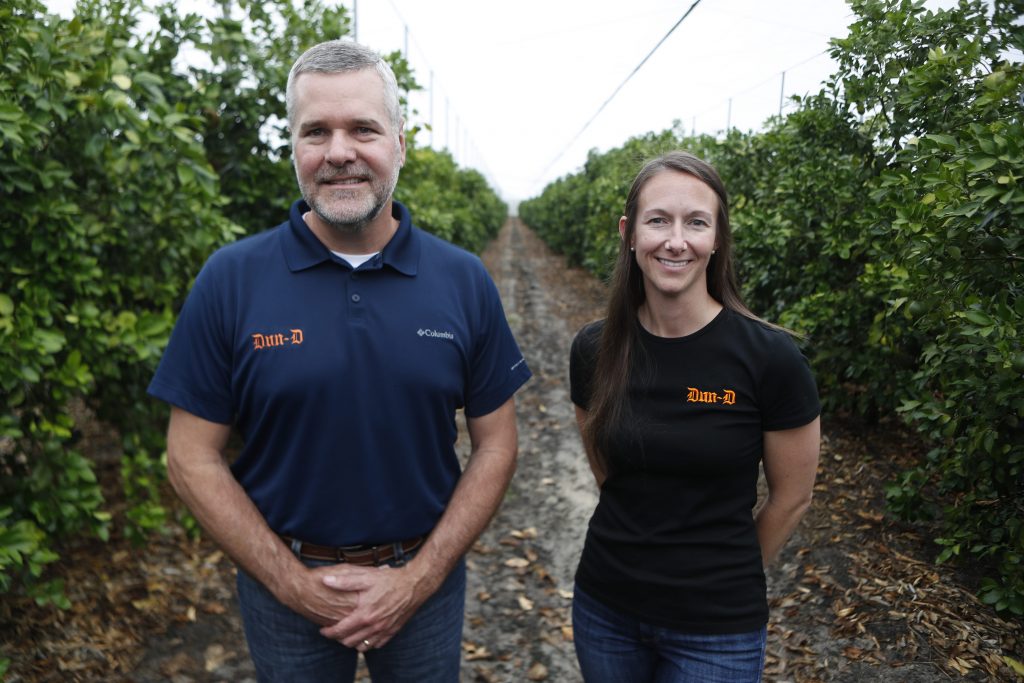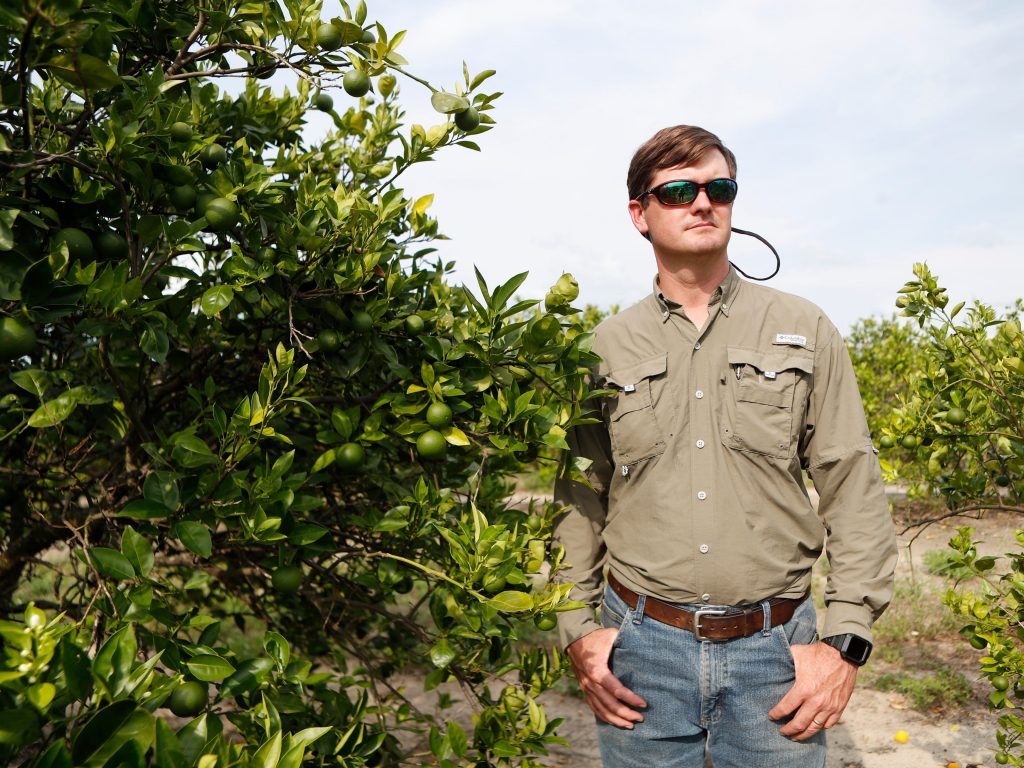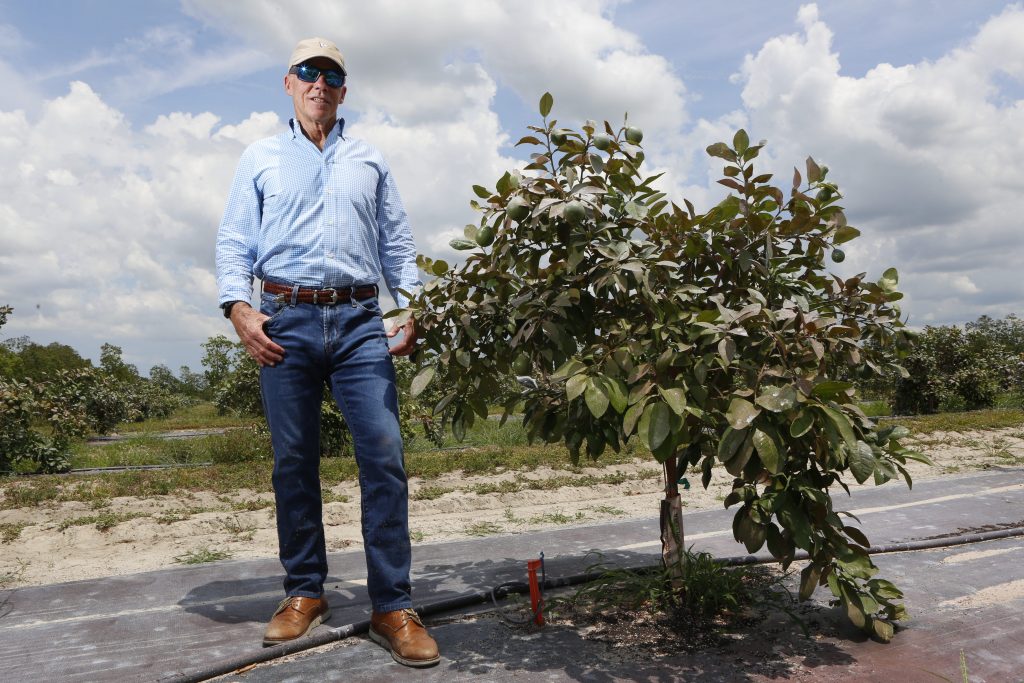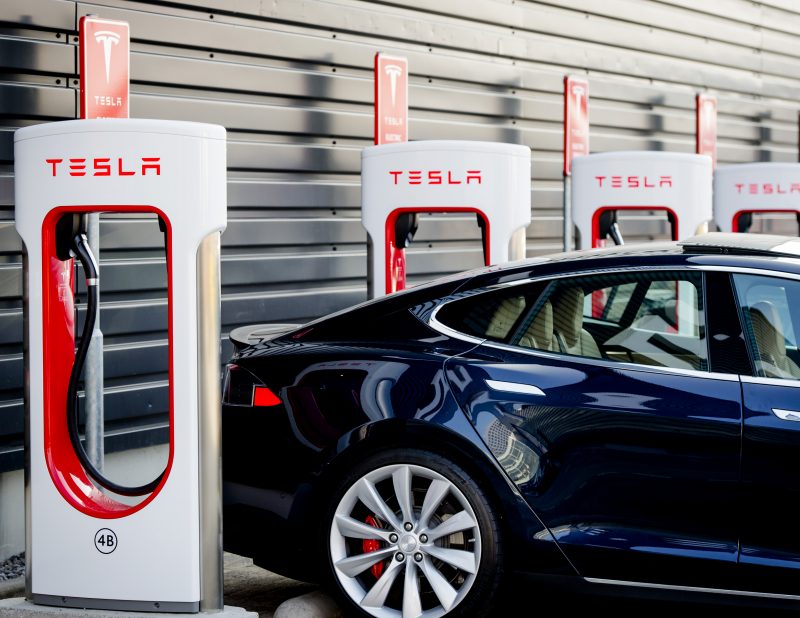- Bottomless mimosas are getting more expensive, so is feeding your kid fresh vitamin C.
- Florida citrus has been hit with a disease and climate-caused shortage, so prices have spiked.
- Growers are coming up with ways to combat the shortage and fight for the industry.
VERO BEACH, Florida — Every two weeks, workers at Dan Richey's Florida orange groves douse the trees in clay.
The reason: The Florida orange crop yield has gone down — and prices have gone up — as the Asian citrus psyllid has invaded the peninsula, causing a disease without a cure that kills citrus plants once they're infected, known as citrus greening.
But as Richey said, bugs can't see the red clay in this pilot program funded by Coca-Cola, which renders the trees invisible to the pests.
"We got a food crisis that's going to happen here," said Richey, the president and CEO of Riverfront Packing Company in central Florida.
Oranges take about 15 months to grow — often consumed in the same form as the one they're in when plucked from the tree. But they're also used to make juice, fragrances, zest, and even cleaning products.
Over the past decade, citrus greening has led to a decrease in the volume of Florida-produced oranges by over half — and a 13.8% price spike for orange juice since last year. (The disease has also been found in California citrus trees since 2012, where production of the fruit is down 14% in the past year.)
This means that Americans on the hunt for fresh vitamin C, bottomless mimosas, or simply a cold glass of orange juice will likely be paying more in the upcoming years — but those in the industry believe demand will persist.
"Every time consumers take a bottle of juice off the supermarket shelf, they're helping the Florida grower who's struggling to overcome so they can continue to provide this for generations to come," said Matt Joyner, the CEO of Florida Citrus Mutual, a trade group representing over 3,000 Florida growers.
Bottomless brunches aren't immune
Thousands of miles up the East Coast, Arthur Ringel is feeling the pinch. The chef and owner of DC Harvest, a restaurant in the US capital's up-and-coming H Street Corridor, told Insider, "Prices are just through the roof all across the board because of the low amount of product on the market right now."
Ringel, who prides himself on his farm-to-table menu, said he had to increase bottomless-mimosa menu prices by $2, to $28. His budget is strained from having to pay more for a smaller fruit that makes less juice, he said.
The price spikes have pushed him to switch to fruits and vegetables that are locally available "and happen to be less cost to the restaurant," Ringel said.
But Ringel said even with increased menu prices, demand for bottomless brunch is still there — and the same goes for the health benefits that oranges provide. In the US, they're the most popular form of vitamin C consumption, which is important for immune-system health and has been a particular focus during the COVID-19 pandemic.
"Demand through the pandemic has been very good for any type of commodity that has vitamin C, and citrus is one of the best ways to get vitamin C directly, either by eating the orange or through orange juice," said Jennifer Schaal, the chief financial officer of Dundee Citrus Growers Association, one of the largest fresh-fruit cooperatives in Florida.
With the number of oranges produced in Florida sliced in half over the past decade because of disease and extreme weather, prices for fresh fruit and juice have increased on grocery-store shelves. Still, Schaal said, that "demand hasn't dwindled, so it's been very good for us on our end in providing that vitamin C."

In Florida, citrus is still king — but it faces challenges
Citrus greening, four hurricanes in 2004 and another in 2017, and increased labor and production costs for things such as fertilizer — the supply of which has been strained because of bans on Russian exports — have made life for citrus growers far from easy.
"In a lot of areas where citrus is what people have done for generations, a lot of those communities depend on it, you know — the car dealerships and the café and all the things up and down the spine of Florida and across the country," Joyner said.
Citrus remains essential to the Florida economy.
"You think of Mickey Mouse, theme parks, beaches, and all that," Joyner said, "but the heart of this state is rural — it's agrarian."

Orange production increased by 2 million boxes this year compared with the April forecast, to 40 million boxes, which suggests things are looking up. The US Department of Agriculture predicted total citrus production for 2022 to be 6 million tons.
"Given everything this industry has been through over the past several years, particularly with the weather, 40 million boxes of oranges is something to be proud of," Shannon Shepp, the executive director of the Florida Department of Citrus, said in a statement.
That's despite production numbers being more than 100 million boxes short of the numbers from a decade prior.
"We are nowhere near where we once were, but it is clear there is a vast number of dedicated people working together to figure out what recovery looks like," she added.

The stakes are high, but growers are adapting
Christian Spinosa, an orange grower at Putnam Groves, focuses solely on juice production in central Florida. He told Insider that he'd seen fertilizer costs "through the roof." He said a day hadn't gone by that he didn't get an email about price increases.
"I mean, truck prices are going up," Spinosa said. "It's everything."
But to make sure Americans can find their favorite juices on the shelf or at the restaurant, growers have been coming up with solutions to fight off invasive insects and climate disasters, in addition to Richey's clay spray. Steven Callaham, the CEO of Dundee Citrus, pointed to the Citrus Under Protective Screen project his organization implemented in 2017, which uses tentlike structures to cover orange and grapefruit trees as they grow and seals them off from invasive species.

"We've proven that on a commercial level, without greening, we have very healthy, very productive trees," Callaham said. "We've gone a step further though — not only putting them under screens, but they're high density, more trees per acre. So we're producing what we feel will be four to five times as much fruit per acre compared to traditional outdoor growth."
Richey agreed that these measures were working but said the industry had a long way to go. But he's not planning on giving up anytime soon.
"We're not where we were. We're probably not finished yet on the down slope, but we're reaching the bottom, and then we're going to start crawling out," Richey said. "New innovation and new research is going to allow us to stay in. There's no quitting here."










